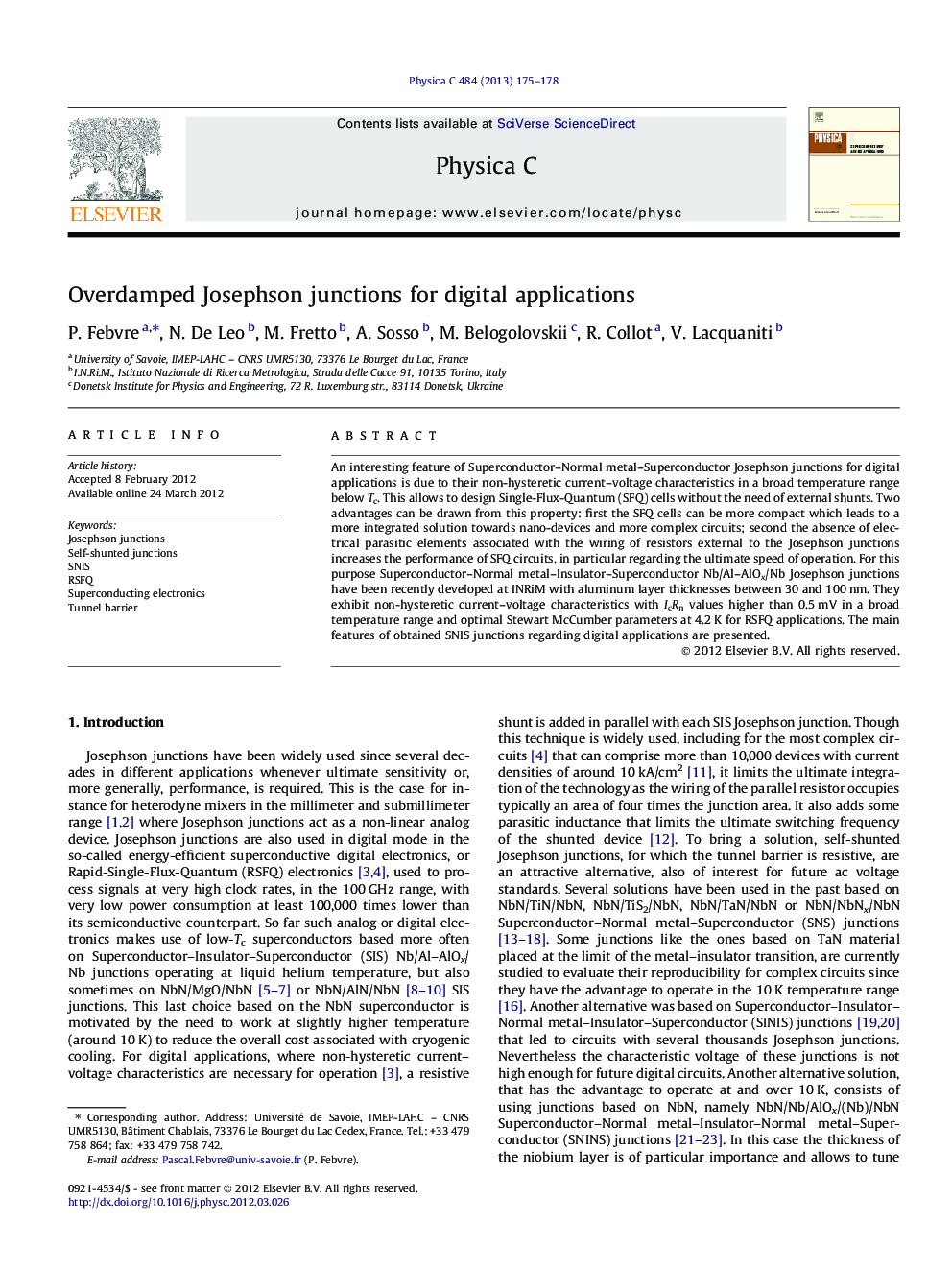| Article ID | Journal | Published Year | Pages | File Type |
|---|---|---|---|---|
| 1818108 | Physica C: Superconductivity and its Applications | 2013 | 4 Pages |
An interesting feature of Superconductor–Normal metal–Superconductor Josephson junctions for digital applications is due to their non-hysteretic current–voltage characteristics in a broad temperature range below Tc. This allows to design Single-Flux-Quantum (SFQ) cells without the need of external shunts. Two advantages can be drawn from this property: first the SFQ cells can be more compact which leads to a more integrated solution towards nano-devices and more complex circuits; second the absence of electrical parasitic elements associated with the wiring of resistors external to the Josephson junctions increases the performance of SFQ circuits, in particular regarding the ultimate speed of operation. For this purpose Superconductor–Normal metal–Insulator–Superconductor Nb/Al–AlOx/Nb Josephson junctions have been recently developed at INRiM with aluminum layer thicknesses between 30 and 100 nm. They exhibit non-hysteretic current–voltage characteristics with IcRn values higher than 0.5 mV in a broad temperature range and optimal Stewart McCumber parameters at 4.2 K for RSFQ applications. The main features of obtained SNIS junctions regarding digital applications are presented.
► Properties of self-shunted sub-micron Nb/Al–AlOx/Nb SNIS junctions are studied. ► 1–100 kA/cm2 current densities and 0.1–0.7 mV critical voltages are obtained. ► The critical voltage-vs-temperature behavior of SNIS junctions is discussed. ► Numerical results showing an effect of the aluminum film thickness are presented. ► A Josephson balanced comparator is studied for different temperatures of operation.
